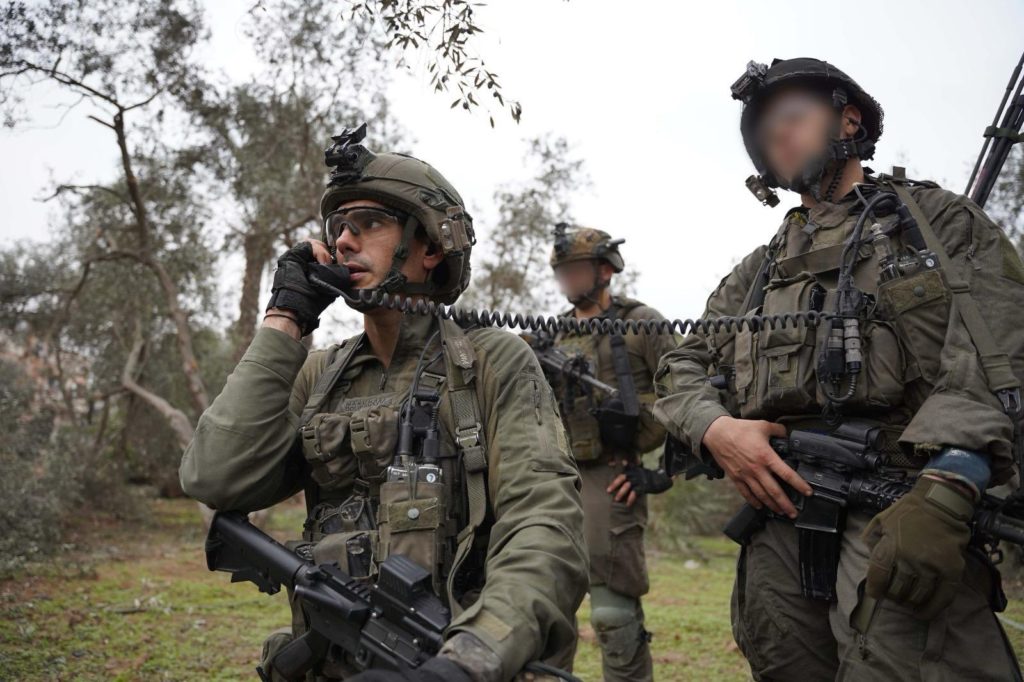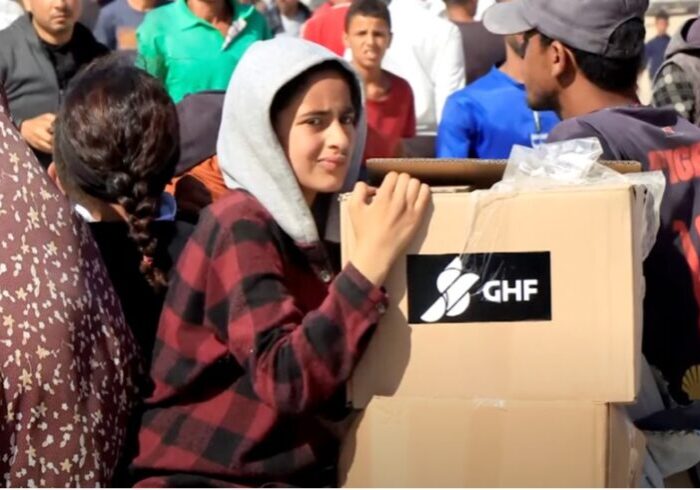Australia/Israel Review
The morality of IDF manoeuvres in Gaza
Jan 25, 2024 | Richard Kemp

Other than hardened anti-Israel zealots and supporters of Hamas, few have questioned the need for Israel to take military action to defend its citizens following the depredations of October 7. But the Israel Defence Forces (IDF) has come under intense criticism about the way it is conducting the war in the Gaza Strip, with allegations of excessive force and even indiscriminate attacks.
Amid this growing reproof from afar, I have not yet heard one single realistic proposal for an alternative way of operating that would reduce civilian harm while still achieving the necessary objectives. That tells me that the IDF has no choice but to prosecute this conflict along current lines, despite the terrible loss of civilian life. But given the ill-informed accusations and wide-ranging misunderstanding of how the IDF is actually operating in Gaza, it is worth a closer look at what the IDF has been doing to mitigate harm to civilians.
I have been in Israel since the start of this war in the immediate aftermath of the slaughter, rape, torture and kidnapping spree four months ago. During that time, I have been extensively briefed on the conduct of operations by IDF commanders and staff and visited a wide range of IDF air and ground combat units, including inside the Gaza Strip, on a number of occasions, when I have been able to observe military operations firsthand.
During “Operation Swords of Iron,” the IDF has faced and continues to face one of the most difficult and complex combat environments any armed force has ever had to deal with. Hamas and its fellow Gaza terrorists have, over several years, been preparing the territory with weapons and ammo caches, booby traps, mines, kill zones, and ambush and sniper positions.
They have an armoury that includes sophisticated ground combat systems including thermobaric anti-armour missiles, explosively formed penetrator IEDs, long-range sniper rifles, explosive suicide vests, remote detonation equipment, attack drones, surveillance drones and ground-mounted surveillance cameras. In addition, they have positioned a vast array of mobile rocket launchers that continue to attack Israel’s civilian population, with missile barrages ongoing since the start of the war.
Hamas fighters and their infrastructure are comprehensively embedded in all populated areas of the Gaza Strip, and frequently relocate both above and below ground according to the movements of the IDF and the civilian population. The terrorists have utilised the predominantly urban areas to afford maximum cover and facilitate concealed approach and escape routes.
Hamas has constructed an extensive network of underground tunnels to gain protection for terrorists, to move fighters and equipment, store weapons, house command and control facilities, as well as to launch attacks and carry out ambushes. Some of these tunnels have been fitted with heavy blast doors to afford greater protection and frustrate assaulting troops. They are booby-trapped and rigged with explosives, early-warning devices and surveillance cameras.
I have been into the tunnels during this conflict and can confirm that this network adds exponentially to the already immense challenges of fighting in urban areas, recognised by military professionals as perhaps the most demanding of all battle environments. Indeed, I am not aware of any comparable purposely-built underground complex that any armed forces have had to tackle in any other conflict.
Hamas’ tactics are based on the exploitation of the civilian population of Gaza. Its above-ground infrastructure utilises protected locations, including a large number of schools, hospitals and mosques for weapons storage, fighting positions, and tunnel access and egress. It has similarly used office and commercial facilities, shops and residential buildings. I have been briefed by combat troops on the ground that in some areas as much as every other house contains elements of terrorist infrastructure. I have been shown, for example, children’s bedrooms used to store grenades, anti-tank missiles and other munitions.
It is a standard Hamas tactic for terrorists to move unarmed, in civilian clothing, among the civilian population, collect weapons stashed in civilian buildings and then carry out attacks against IDF troops. Hamas often compels civilians to remain in positions that the IDF is likely to attack, seeking to either deter an assault or exploit civilian deaths for international propaganda purposes if an attack is carried out. There are examples of Hamas killing civilians who fail to obey.
In addition to all this, Hamas is holding a large number of hostages in the Gaza Strip, which adds significant complications as the IDF seeks to find and rescue them and to avoid inadvertently killing them. Hamas has used the presence of its captives, including simulated and recorded hostage voices and related markings, to lure IDF soldiers into ambushes. Along with the tunnels, this adds yet another unique dimension to this conflict.
This daunting combination of concurrent and conflicting challenges, coupled with the fact that Hamas systematically uses Gazans as human shields, and operates within and beneath civilian infrastructure, means that it is literally not possible to achieve the objectives of defeating Hamas and rescuing the hostages without the tragic consequence of civilian casualties and the regrettable destruction of civilian property from both ground and air. No army in the world would be able to do so, no matter what tactics they employed, and indeed no other army has ever done so in any comparable conflict.
I have been briefed on IDF techniques and training for mitigating harm to civilians by commanders, staff officers and lawyers. I have also spoken to a large number of air and ground combat troops, and all have shown a clear understanding of the IDF rules of engagement and the laws of armed conflict, as well as the personal and unit dedication to adhere to them. For example, I was present recently at a conference of operational commanders inside the Gaza Strip at which they discussed in great detail measures to avoid harm to civilians while attacking enemy positions in the close vicinity of a school that was being used for refuge by civilians. It was clear to me that the determination to protect civilian life was at the forefront of these commanders’ minds, in their planning and in their direction of tactical operations.
Measures that the IDF routinely takes include selection of munitions to achieve the necessary effect on enemy targets while reducing the prospects of civilian casualties, especially in air operations where such calibration is more practicable; calculating proportionality; discriminating between combatants and non-combatants; and warning and enabling civilians to leave areas that are to be targeted.
The latter includes, at the time of writing, airdropping six million leaflets warning civilians to leave specified areas and indicating places of greater safety. In addition, the IDF has made 14 million pre-recorded phone calls and 72,000 personal calls warning civilians to leave targeted areas. The IDF then extensively monitors target areas from the air and ground to confirm the departure of civilians where possible before striking.
With these and other measures, the IDF has done all it is able to warn civilians of impending attacks.
Temporary evacuation of civilians from areas of intense fighting into places of relative safety is the best way to keep civilians as far as possible out of harm’s way when fighting an enemy that has no regard for its own population, and, in fact, actively seeks to cause their deaths in order to bring pressure on Israel to cease its defensive operations inside Gaza.
This latter factor may not be unique to this conflict, but for Hamas, it is a top operational priority, which makes it far more challenging for the IDF to minimise the number of civilian casualties. The IDF recognises this and consequently makes efforts beyond those of any other army.
The IDF is also working hard to alleviate civilian suffering by facilitating the delivery of humanitarian aid. That includes daily pauses in fighting and the opening of humanitarian corridors and humanitarian relief zones. The IDF enables the supply of hundreds of tonnes of aid each day, and current constraints on aid delivery are due not to IDF-imposed restrictions but to the capacity of UN aid organisations.
The fact is that unilateral humanitarian pauses, and the creation of corridors, provide a military advantage to Hamas. Additionally, there is no doubt that some of the aid delivered into Gaza is appropriated by terrorists.
Information and intelligence shortcomings, operational mistakes, human error, miscalculations and technical malfunctions occur in all wars, and sometimes tragically lead to loss of civilian life and indeed to fratricide (“friendly fire” or “blue on blue”). I have witnessed and been involved in several such events in other conflicts. Inevitably, dreadful incidents of this nature have occurred in this war, too. When errors or unlawful activity are suspected, the IDF uses its Fact-Finding Assessment Mechanism (which I have observed in action) to learn lessons, prevent repetition, and, if appropriate, refer cases to the Military Advocate General for further investigation.
Based on my own military experience in similar types of conflict and on my direct observations throughout the first three months of this war, in my opinion, the IDF has taken all reasonable measures to achieve its mission while minimising harm to the civilian population and maximising humanitarian relief.
Nor are Israel’s military objectives optional or negotiable. To eliminate the potential for a recurrence of another October 7-style massacre, which Hamas’ leaders have repeatedly threatened, Hamas’ fighting capabilities must be destroyed; its ability to continue firing lethal rockets into the Israeli population must be denied; and every possible effort must be made to rescue the hostages.






